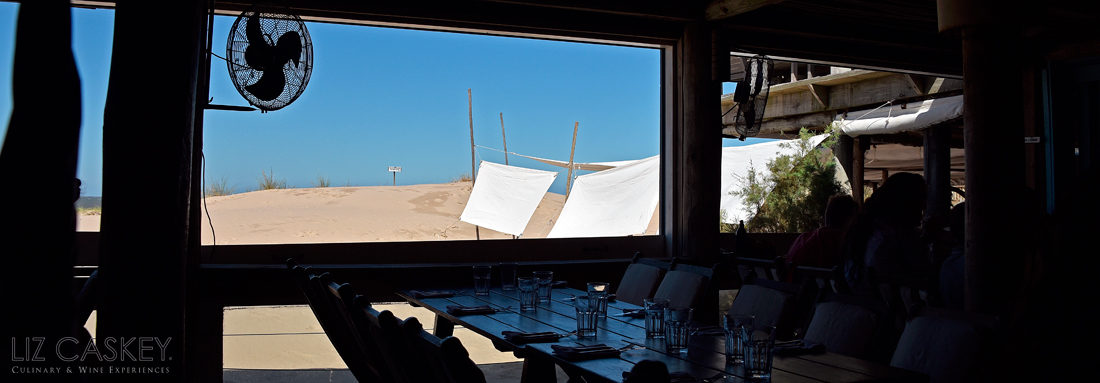
Although wine professionals have long been sticklers with serving wines at precisely the perfect temperature in restaurants, among aficionados, there seems to be a confusing gray area surrounding this issue and what works best. A couple years ago, I invested in a US$1 thermometer that, while not a fashionable wine gadget, has certainly changed my perception about how truly important the role of temperature is when drinking wine. Ultimately, it upped my wine pleasure several notches. If you go the therometer route, yes, your mamma may accuse you of “showing off”; friends may roll their eyes and give you a hard time; and maybe only your dog will lovingly look at you and understand why it’s necessary to go to all this apparent fuss. Let’s hash this out once and for all and get down to the important business: making the most of your vino.
Champagne and sparkling wines are served at 40F/5C. There’s nothing remotely appealing about lukewarm or lightly chilled bubbly. No hit or miss here. Either it’s cold and crunchy or it’s not.
White wines like Chenin Blanc, Sauvignon Blanc, Loire Valley wines, Rieslings, Rosé, Gerwurtraminers, non-oaked Chardonnay, and other white varietals should be served around 45F/7C. The bottle will feel chilled to the touch. If you serve these colder, say like a sparkling wine, although only 5 degrees less, the cold will cover all aromas and minimize the flavors. The result? The expression will be muted and enjoyment (temporarily) stalled until it warms up. Now, an exception to this is, if you are hanging by the pool and its 95F/34C, then probably it’s better err on the cold side. You only sacrifice a couple sips to keep the rest at its perfect temp.
Fuller-bodied wines like Late Harvest, Sauternes, rich Chardonnays, and even red wines like Beaujolais should be sipped at 50F/10C. A red wine cold? You bet. Beaujolais shines here. Although these wines need to be chilled, since they have considerable body and a silky mouthfeel, you want to be able to perceive that—hence, slightly warmer temperature.
Ahh, beloved Pinot Noir. With its inherent complexity, soft tannins, and bright acidity, it tends to straddle the line between a white and red, both in wine personality and serving temperature. Pinots should be cool but not cold. Try serving them at 60F/7C for optimum results, especially New World Pinot from California, Otago (NZ), and Chile where alcohol can land at 14.5%!
Now this last one may cause some commotion. There seems to be an urban legend that red wine, Cabernet Sauvignon, Merlot, Carmenere, Malbec, Zinfandel, Bordeaux, Syrah, and big, tannic reds, should be poured “warm”, or at room temp. In fact, in Chile, I have actually witnessed family members (not my husband, thankfully) put the wine by the fire to get it nice and caliente. Can you say warm sangría?
This could not be farther from the truth. Room temperature, back in the day, hovered around 65 F/15C, not today’s 73F/20C with A/C and heating year round. So what do those extra degrees do? The alcohol takes on a rather aggressive bite that feels “hot” in your mouth. It ultimately masks the flavors and turns the wine into an unbalanced cocktail instead of a subtle, pleasureable drink. For this reason, red wines served at 60F/15C will feel slightly cool at first but by the last sip, will have risen to room temp.
I know what you are thinking. This is all interesting but I don’t have a thermometer nor time to memorize all this. What can I do? Cool. Let’s assume your frig is set around 45F. You can either keep your whites in there and drink directly from the frig, or put them in an hour or two ahead of time to get them chilled. Another option is to ice them in a bucket with water, ice, and some kosher salt which make the temperature cool off even quicker, probably about 15 minutes.
For reds, stick the bottle in the frig for 30 minutes before serving. If you decide to decant, you’ll need to make a room for the decanter too.
Experiment and see if you can start sensing the differences. At first, it may seem deliberate and even slightly ridiculous. However, as you taste wines at their correct temperature, it does become second nature—and the increase in your wine pleasure index is totally worth the little extra effort.












